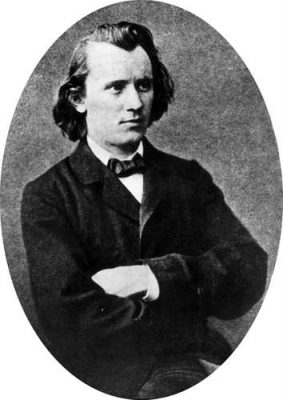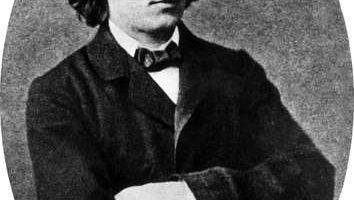
Johannes Brahms, 1853.
Encyclopedia Britannica, Inc.
Classical western music is divided into multiple periods where the sound has evolved over time due to historical events and notable composers of the time. Let’s take a look at the Romantic period, which took place from 1830 – 1900! If you would like a refresher on the two periods that precede the Romantic period, you can find information on the Baroque period here and the Classical period here!
Beethoven is known for causing the transition from the Classical period to the Romantic period as he expanded on and broke free from the strict rules of Classical music. The Romantic period’s music was theatrical, energetic, and emotional, and composers drew on influences from famous art and literature. Tone poems are characteristic of this period, and they are single-movement pieces that are inspired by and tell a story or poem. Listen to this classic example of a tone poem, Tchaikovsky’s Romeo and Juliet. Based on what you may already know about the story of Romeo and Juliet, what do you think is happening throughout the piece? How is Tchaikovsky conveying that? What instruments do you hear, and how do their sounds make you feel?
There are quite a few notable composers of the Romantic period. Liszt is known for his piano compositions, as is Chopin. Chopin also composed operas, and Verdi composed operas, too. Verdi’s operas are unique in that he introduced themes besides art and literature in his works—he also included political, social, and national themes. Wagner is another notable opera composer, and he created sweeping music where the characters and themes are given motif melodies, known as leitmotifs. Strauss and Puccini followed Wagner’s innovation with opera and creating musical motifs throughout the composition.
Romantic music has many musical differences from its predecessors. Instead of having the traditional, eight-bar phase, Romantic music has uneven phrasing throughout the piece. In case you forgot what a phrase is, think of it as a musical sentence! Instead of each sentence have 8 words, composers created more variety in their sentence structures and lengths. Composers made many unexpected decisions with their pieces because they didn’t have to follow all the traditional rules of Baroque and Classical music. They made these artistic choices to better express the expanse and passion of their emotions and stories. The orchestra itself changed during the Romantic period to include more woodwind and percussion instruments. This allowed the composers to explore even more sounds and emotions, and it helped them focus on their individuality and creativity.
Listening activity: Listen to these famous pieces below, you may have heard them before! Think of the story the composer is trying to tell and how they are doing it. Do you hear the woodwinds and percussion? What is the phrasing like? How is the piece structured? If you would like to expand on this activity, try to draw how the music makes you feel by using different colors and shapes!
And there you have it, a brief introduction to the Romantic period of music! If you’re curious to learn more, look up some of the composers mentioned here and their pieces!
Sources:
Romantic Music: A Beginner’s Guide https://www.classicfm.com/discover-music/periods-genres/romantic/romantic-music-beginners-guide/
Discover Music: The Romantic Period https://www.classicfm.com/discover-music/periods-genres/romantic/

